Fall 2014 (Volume 24, Number 3)
Life Around 60
By Sharon A. LeClercq, MD, FRCPC
Download PDF
On September 14th, 2013, I celebrated my 62nd birthday; only a few years left until I am eligible to collect from the Canada Pension Plan (CPP) and consider myself a senior citizen. Well, that is just not going to happen! Who could have known that from age 58 onward, I would be been having the time of my life, travelling the world, taxing my physical and mental limits, and learning to do things I have carefully avoided for many years (such as buying a bathing suit and actually getting in the ocean—in fact, in the last three years I have put my foot into four oceans).
I have travelled each year since 2009 with an old friend; Helen Ward came to Edmonton from Australia in 1978 when I was a medical resident and she lived with me while I completed my rheumatology fellowship. She was a research fellow in pulmonary medicine during this time. The fact that she went winter camping her very first year in Canada and measured the temperature in various places in her immediate environment (it was -39°C just outside the door of her tent) tells you much about the spirit of adventure of my mate. Once we both became empty nesters, we made a bucket list and we have applied ourselves rigorously to it. The category of up to and including age 65 contained the most physically taxing places, just in case we later ran out of steam. The fact of the matter is however that the more you do, the easier it gets. We have already started to revise our “after 65 years of age” list.
Last year was very special. Helen and I spent five weeks in South America: two weeks sailing in the Galapagos Islands, one week in rubber boots in the Amazonian rain forest, and a little over two weeks hiking in Peru. I would be hard pressed to rank these places in order, as they were all unique and amazing. What follows is a photo essay along with snippets of information from each of these areas.
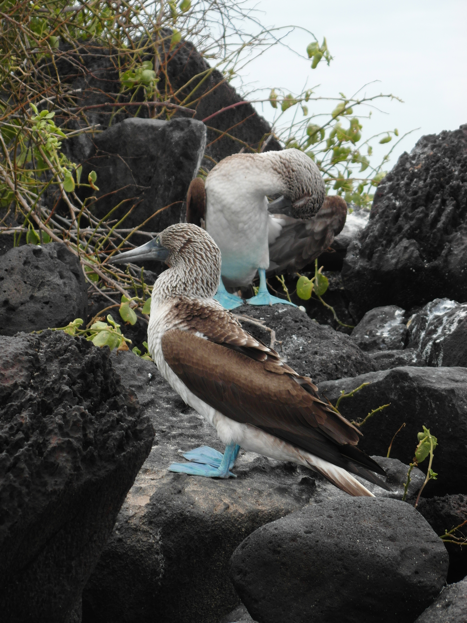
Graceful in the air and beautiful on land, the courtship ritual of the blue-footed booby is hilarious: male boobies dance around with their heads and tails pointing to the sky, all the while calling out to the females cruising overhead.
 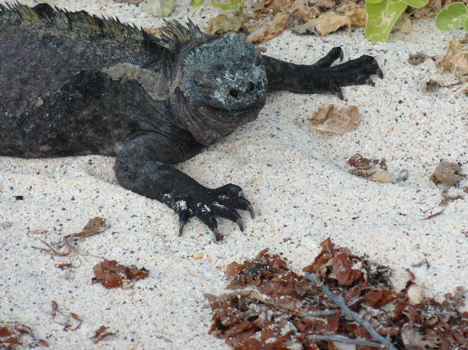
The solitary, beautiful, golden land iguanas (left) are
found inland on several of the Galapagos islands, and their counterparts, the slothful marine iguanas (right), are found lying all over each other on the hot black lava rock of the more western islands. On islands with land iguanas, the prickly pears cactus has sharp hard prickles, but on islands without these lovely creatures, the pears have soft short hairs rather than prickles. These islands actively illustrate evolution and adaptation in action.
 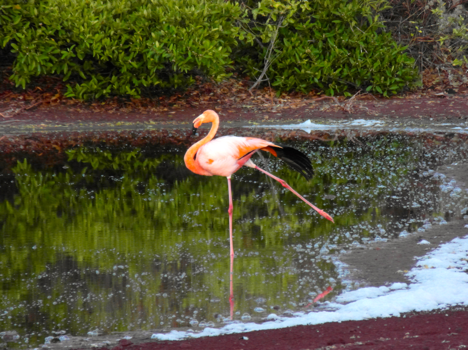
Up as usual by 5:30 AM, we left in our panga (speed boat), and landed by 6:00 AM on a beautiful island called Rabida Island, where we walked quietly to a brackish water lagoon. Here I captured my one and only dancing flamingo.

Typical beautiful day in the Galapagos, with rock lava, sandy beaches, and gorgeous blue water.
 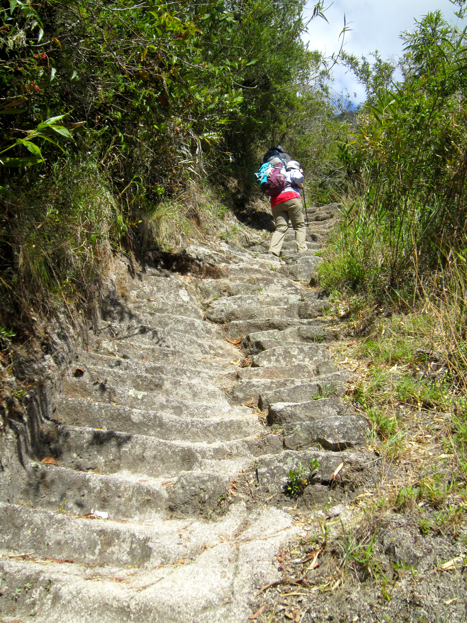
On the Inca Trail, on the way to the Sacred Gate that looks down on Machu Picchu (left). Much of the countryside in Peru features trails and ruins all oriented with the sun and the major Inca sites. This relatively flat section is the exception. For the most part, the journey is upward, as evidenced by the second picture (right). Slow and steady will eventually get you to your goal.
 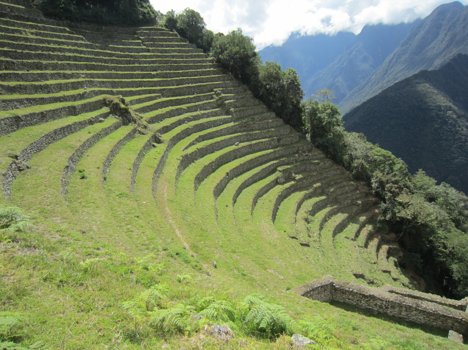 After hiking in and around Cusco, Peru for several days and then hiking along the Urubamba river, we took the train to KM 104 and rejoined the Inca trail for the ascent to the Sacred Gate and Machu Picchu. Here I am with our guide, Joana (left) before starting the 10 km leg of the trail, which continues up and up to a beautiful Inca site called Winay Wayna, an Inca site close to Machu Picchu that was thought to be an agricultural research station. There is a temperature gradient of five degrees between the different terraces which allowed for cultivation of plants at different temperatures to encourage adaptation (right). After hiking in and around Cusco, Peru for several days and then hiking along the Urubamba river, we took the train to KM 104 and rejoined the Inca trail for the ascent to the Sacred Gate and Machu Picchu. Here I am with our guide, Joana (left) before starting the 10 km leg of the trail, which continues up and up to a beautiful Inca site called Winay Wayna, an Inca site close to Machu Picchu that was thought to be an agricultural research station. There is a temperature gradient of five degrees between the different terraces which allowed for cultivation of plants at different temperatures to encourage adaptation (right).
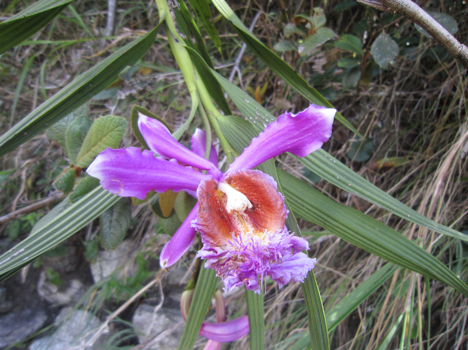
Winay Wayna is the Quechua word meaning forever young and is also the name of an orchid that grows in this area.
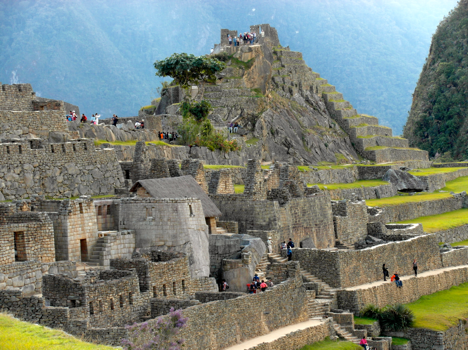
Machu Picchu is an amazing place. We spent several hours roaming around the site and revisiting some of the very special places, such as the Temple of the Sun, designed and physically oriented to worship Inti, the Sun God. This spectacular round building was built over a very large rock that has a cave in its base. It is believed that this was the royal tomb of Pachacuti, the ninth Inca ruler who began the expansion of the Inca Empire far and wide.
“Where next?”, you might ask. In the summer of 2014, we plan to explore more of beautiful Western Canada, hopefully after we have both sold our houses, moved into condos free of responsibilities, and still have a few dollars left in the bank. Although we are empty nesters, we still have children on the payroll. We plan to hike in and around Lake O’Hara, into the Burgess Shale just up the mountain from Emerald Lake, and into Crypt Lake in Waterton Lakes National Park where the prairie meets the mountains. Life is short. Make sure you enjoy it.
Sharon A. LeClercq, MD, FRCPC
Clinical Associate Professor,
Division of Rheumatology,
University of Calgary
Calgary, Alberta |



